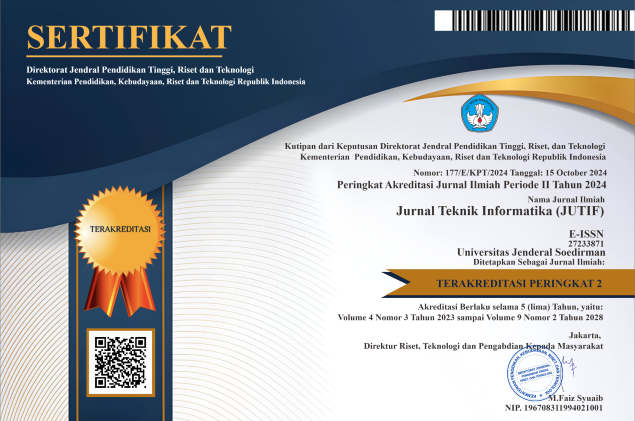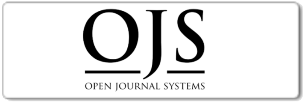A Comparative Analysis of Color Channel-Based Feature Extraction using Machine Learning versus Deep Learning for Food Recognition
DOI:
https://doi.org/10.52436/1.jutif.2025.6.4.5001Keywords:
Color Channel Based Feature Extraction, Color Space, Deep Learning, Machine Learning, Food recognition, Texture ExtractionAbstract
Automated Dietary Assessment Accurate food recognition is a big challenge in computer vision which is critical for developing Automated Dietary assessment and health monitoring systems. The key question it answered was whether traditional machine learning with feature engineering by hand can beat modern deep learning approaches? In this Context, this study serves as a comparative analysis of these two paradigms. The baseline method worked by extracting texture (LBP,GLCM) and color information from different channels of five colors spaces (RGB, HSV, LAB, YUV,YCbCr) followed by feeding these features into multiple classifiers such as Nearest Neighbor(NN), Decision Tree and Naïve Bayes. These were then compared to deep learning models (MobileNet_v2, ResNet18, ResNet50, EfficientNet_B0). The best traditional one can reach an accuracy of 93.33%, using texture features extracted from the UV channel and classified with a NN. Nevertheless, the deep learning models consistently presented higher performance and MobileNet_v2 reached up to 94.9% accuracy without requiring manual feature selection. In this paper, we show that end-to-end deep learning models are more powerful and error robust for food recognition. These results highlight their promise for constructing more effective and scalable real-world applications with less need for intricate, domain-specific feature engineering.
Downloads
References
S. Han, J. Xiao, and S. Lee, “From Kitchen to Clinic: Integrating Food as a Vital Component of Healthcare,” Future Postharvest Food, vol. 2, no. 2, pp. 139–146, Jun. 2025, doi: 10.1002/fpf2.70005.
P. Mishra and G. Singh, “Internet of Medical Things Healthcare for Sustainable Smart Cities: Current Status and Future Prospects,” Appl. Sci., vol. 13, no. 15, p. 8869, Aug. 2023, doi: 10.3390/app13158869.
J. Bassaganya-Riera et al., “Goals in Nutrition Science 2020-2025,” Front. Nutr., vol. 7, p. 606378, Feb. 2021, doi: 10.3389/fnut.2020.606378.
S. M. Donovan et al., “Personalized nutrition: perspectives on challenges, opportunities, and guiding principles for data use and fusion,” Crit. Rev. Food Sci. Nutr., pp. 1–18, Feb. 2025, doi: 10.1080/10408398.2025.2461237.
G. Prasad, M. Padhiary, A. Hoque, and K. Kumar, “AI-Driven Personalized Nutrition Apps and Platforms for Enhanced Diet and Wellness:,” in Food in the Metaverse and Web 3.0 Era, A. M. Alhussaini Hamad and R. Soni, Eds., IGI Global, 2025, pp. 125–158. doi: 10.4018/979-8-3693-9025-2.ch006.
L.-I. Coman, M. Ianculescu, E.-A. Paraschiv, A. Alexandru, and I.-A. Bădărău, “Smart Solutions for Diet-Related Disease Management: Connected Care, Remote Health Monitoring Systems, and Integrated Insights for Advanced Evaluation,” Appl. Sci., vol. 14, no. 6, p. 2351, Mar. 2024, doi: 10.3390/app14062351.
A. Abeltino et al., “Digital applications for diet monitoring, planning, and precision nutrition for citizens and professionals: a state of the art,” Nutr. Rev., vol. 83, no. 2, pp. e574–e601, Feb. 2025, doi: 10.1093/nutrit/nuae035.
P. Khatiwada, B. Yang, J.-C. Lin, and B. Blobel, “Patient-Generated Health Data (PGHD): Understanding, Requirements, Challenges, and Existing Techniques for Data Security and Privacy,” J. Pers. Med., vol. 14, no. 3, p. 282, Mar. 2024, doi: 10.3390/jpm14030282.
H. S. Nogay, N. H. Nogay, and H. Adeli, “Image‐based food groups and portion prediction by using deep learning,” J. Food Sci., vol. 90, no. 3, p. e70116, Mar. 2025, doi: 10.1111/1750-3841.70116.
S.-T. Cheng, Y.-J. Lyu, and C. Teng, “Image-Based Nutritional Advisory System: Employing Multimodal Deep Learning for Food Classification and Nutritional Analysis,” Appl. Sci., vol. 15, no. 9, p. 4911, Apr. 2025, doi: 10.3390/app15094911.
Y. Feng, Y. Wang, X. Wang, J. Bi, Z. Xiao, and Y. Luo, “Large-scale image classification and nutrient estimation for Chinese dishes,” J. Agric. Food Res., vol. 19, p. 101733, Mar. 2025, doi: 10.1016/j.jafr.2025.101733.
U. Chanthanuwatkun, A. Jitpattanakul, and N. Hnoohom, “Image Classification and Segmentation for Estimating Calories of Food,” in 2025 Joint International Conference on Digital Arts, Media and Technology with ECTI Northern Section Conference on Electrical, Electronics, Computer and Telecommunications Engineering (ECTI DAMT & NCON), Nan, Thailand: IEEE, Jan. 2025, pp. 525–530. doi: 10.1109/ECTIDAMTNCON64748.2025.10962099.
S. Feng, Y. Wang, J. Gong, X. Li, and S. Li, “A fine-grained recognition technique for identifying Chinese food images,” Heliyon, vol. 9, no. 11, p. e21565, Nov. 2023, doi: 10.1016/j.heliyon.2023.e21565.
H. He, F. Kong, and J. Tan, “DietCam: Multiview Food Recognition Using a Multikernel SVM,” IEEE J. Biomed. Health Inform., vol. 20, no. 3, pp. 848–855, May 2016, doi: 10.1109/JBHI.2015.2419251.
P. McAllister, H. Zheng, R. Bond, and A. Moorhead, “Combining deep residual neural network features with supervised machine learning algorithms to classify diverse food image datasets,” Comput. Biol. Med., vol. 95, pp. 217–233, Apr. 2018, doi: 10.1016/j.compbiomed.2018.02.008.
A. J. Moshfegh, D. G. Rhodes, and C. L. Martin, “National Food Intake Assessment: Technologies to Advance Traditional Methods,” Annu. Rev. Nutr., vol. 42, no. 1, pp. 401–422, Aug. 2022, doi: 10.1146/annurev-nutr-062320-110636.
N. Shinozaki and K. Murakami, “Evaluation of the Ability of Diet-Tracking Mobile Applications to Estimate Energy and Nutrient Intake in Japan,” Nutrients, vol. 12, no. 11, p. 3327, Oct. 2020, doi: 10.3390/nu12113327.
L. Lin, J. He, F. Zhu, E. J. Delp, and H. A. Eicher-Miller, “Integration of USDA Food Classification System and Food Composition Database for Image-Based Dietary Assessment among Individuals Using Insulin,” Nutrients, vol. 15, no. 14, p. 3183, Jul. 2023, doi: 10.3390/nu15143183.
H. Hassannejad, G. Matrella, P. Ciampolini, I. De Munari, M. Mordonini, and S. Cagnoni, “Food image recognition using very deep convolutional networks,” in Proceedings of the 2nd International Workshop on Multimedia Assisted Dietary Management, 2016, pp. 41–49.
V. B. Raju, M. H. Imtiaz, and E. Sazonov, “Food Image Segmentation Using Multi-Modal Imaging Sensors with Color and Thermal Data,” Sensors, vol. 23, no. 2, p. 560, Jan. 2023, doi: 10.3390/s23020560.
M. Anthimopoulos, J. Dehais, P. Diem, and S. Mougiakakou, “Segmentation and recognition of multi-food meal images for carbohydrate counting,” in 13th IEEE International Conference on BioInformatics and BioEngineering, Chania, Greece: IEEE, Nov. 2013, pp. 1–4. doi: 10.1109/BIBE.2013.6701608.
X. Huang et al., “Application of Image Computing in Non-Destructive Detection of Chinese Cuisine,” Foods, vol. 14, no. 14, p. 2488, Jul. 2025, doi: 10.3390/foods14142488.
A. Mjahad, A. Polo-Aguado, L. Llorens-Serrano, and A. Rosado-Muñoz, “Optimizing Image Feature Extraction with Convolutional Neural Networks for Chicken Meat Detection Applications,” Appl. Sci., vol. 15, no. 2, p. 733, Jan. 2025, doi: 10.3390/app15020733.
K. Shehzad, U. Ali, and A. Munir, “Computer Vision for Food Quality Assessment: Advances and Challenges,” SSRN Electron. J., 2025, doi: 10.2139/ssrn.5196776.
M. Rashed, S. Fakhry, and R. Satour, “Revolutionizing Food Quality With Machine Vision and Machine Learning Techniques:,” in Food in the Metaverse and Web 3.0 Era, A. M. Alhussaini Hamad and R. Soni, Eds., IGI Global, 2025, pp. 71–124. doi: 10.4018/979-8-3693-9025-2.ch005.
Z. Zhu and Y. Dai, “Improving Food Segmentation Through Selecting Suitable Feature Representations of Image Pixels,” in Pattern Recognition. ICPR 2024 International Workshops and Challenges, vol. 15617, S. Palaiahnakote, S. Schuckers, J.-M. Ogier, P. Bhattacharya, U. Pal, and S. Bhattacharya, Eds., in Lecture Notes in Computer Science, vol. 15617. , Cham: Springer Nature Switzerland, 2025, pp. 34–48. doi: 10.1007/978-3-031-88217-3_3.
S. Ghanghas, N. Kumar, V. K. Singh, S. Kumar, S. Birania, and A. Kumar, “Image Processing Technology, Imaging Techniques, and Their Application in the Food Processing Sector,” in Nonthermal Food Engineering Operations, 1st ed., N. Kumar, A. Panghal, and M. K. Garg, Eds., Wiley, 2024, pp. 193–223. doi: 10.1002/9781119776468.ch6.
U. S. Khan et al., “Unsupervised Color Segmentation with Reconstructed Spatial Weighted Gaussian Mixture Model and Random Color Histogram,” Comput. Mater. Contin., vol. 78, no. 3, pp. 3323–3348, 2024, doi: 10.32604/cmc.2024.046094.
Y. Lu, S. Young, H. Wang, and N. Wijewardane, “Robust plant segmentation of color images based on image contrast optimization,” Comput. Electron. Agric., vol. 193, p. 106711, Feb. 2022, doi: 10.1016/j.compag.2022.106711.
K. Kiswanto, H. Hadiyanto, and E. Sediyono, “Meat Texture Image Classification Using the Haar Wavelet Approach and a Gray-Level Co-Occurrence Matrix,” Appl. Syst. Innov., vol. 7, no. 3, p. 49, Jun. 2024, doi: 10.3390/asi7030049.
J. Ling, D. R. Heldman, and 1. School of Computer Science, Guangzhou Maritime University, Guangzhou 510725, China2. Department of Food Science and Technology, The Ohio State University, Columbus, OH 43210, USA, “Integration of machine learning technologies in food flavor research: Current applications, challenges, and future perspectives,” Int. J. Agric. Biol. Eng., vol. 18, no. 3, pp. 1–11, 2025, doi: 10.25165/j.ijabe.20251803.9623.
R. S and G. Battineni, “A Survey on Recent Advancements in Auto-Machine Learning with a Focus on Feature Engineering,” J. Comput. Cogn. Eng., May 2023, doi: 10.47852/bonviewJCCE3202720.
W. Zhang, E. Chen, M. Anderson, S. Thompson, and J. Lee, “Multimodal Deep Learning-Based Intelligent Food Safety Detection and Traceability System,” Int. J. Manag. Sci. Res., vol. 8, no. 3, pp. 71–76, Mar. 2025, doi: 10.53469/ijomsr.2025.08(03).09.
W. Ji, K. Zhai, B. Xu, and J. Wu, “Green Apple Detection Method Based on Multidimensional Feature Extraction Network Model and Transformer Module,” J. Food Prot., vol. 88, no. 1, p. 100397, Jan. 2025, doi: 10.1016/j.jfp.2024.100397.
G. A. Tahir and C. K. Loo, “Progressive Kernel Extreme Learning Machine for Food Image Analysis via Optimal Features from Quality Resilient CNN,” Appl. Sci., vol. 11, no. 20, p. 9562, Oct. 2021, doi: 10.3390/app11209562.
M. Luo, W. Min, Z. Wang, J. Song, and S. Jiang, “Ingredient Prediction via Context Learning Network With Class-Adaptive Asymmetric Loss,” IEEE Trans. Image Process., vol. 32, pp. 5509–5523, 2023, doi: 10.1109/TIP.2023.3318958.
W. M. Thu, Dr. P. E. San, and D. W. T. Tun, “GLCM and LTP Based Classification of Food Types,” Int. J. Sci. Eng. Appl., pp. 218–222, Apr. 2023, doi: 10.7753/IJSEA0708.1018.
A. A. Gade and A. J. Vyavahare, “Feature Extraction using GLCM for Dietary Assessment Application,” Int. J. Multimed. Image Process., vol. 8, no. 2, pp. 409–413, Jun. 2018, doi: 10.20533/ijmip.2042.4647.2018.0050.
A. Tatsuma and M. Aono, “Food Image Recognition Using Covariance of Convolutional Layer Feature Maps,” IEICE Trans. Inf. Syst., vol. E99.D, no. 6, pp. 1711–1715, 2016, doi: 10.1587/transinf.2015EDL8212.
A. Arnita, F. Marpaung, Z. A. Koemadji, M. Hidayat, A. Widianto, and F. Aulia, “Selection of Food Identification System Features Using Convolutional Neural Network (CNN) Method,” Sci. J. Inform., vol. 10, no. 2, pp. 205–216, May 2023, doi: 10.15294/sji.v10i2.44059.
N. Veernagouda Ganganagowder and P. Kamath, “Intelligent classification models for food products basis on morphological, colour and texture features,” Acta Agronómica, vol. 66, no. 4, pp. 486–494, Oct. 2017, doi: 10.15446/acag.v66n4.60049.
Additional Files
Published
How to Cite
Issue
Section
License
Copyright (c) 2025 Yuita Arum Sari, Dwi Cahya Astria Nugraha, Sigit Adinugroho

This work is licensed under a Creative Commons Attribution 4.0 International License.



























